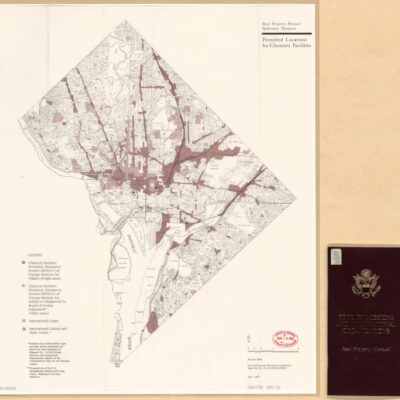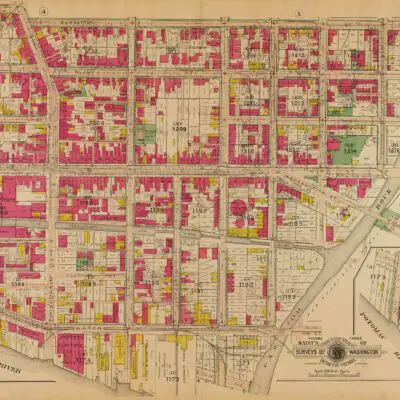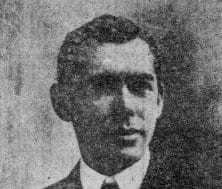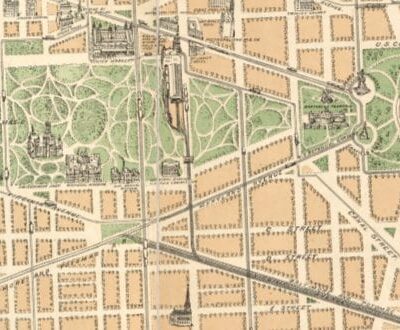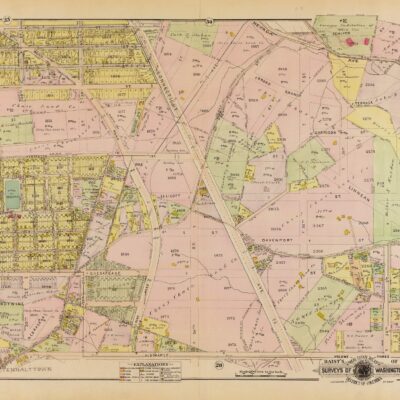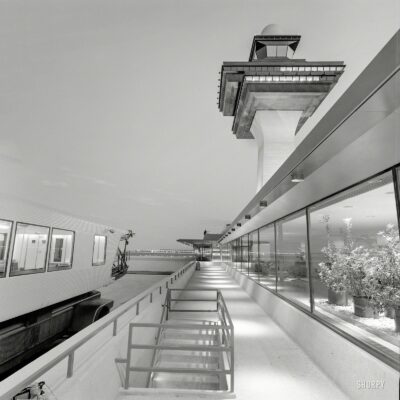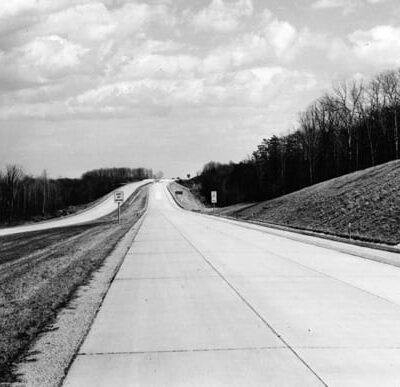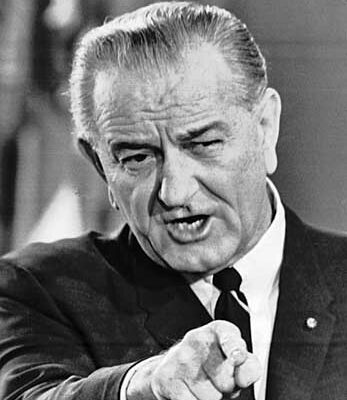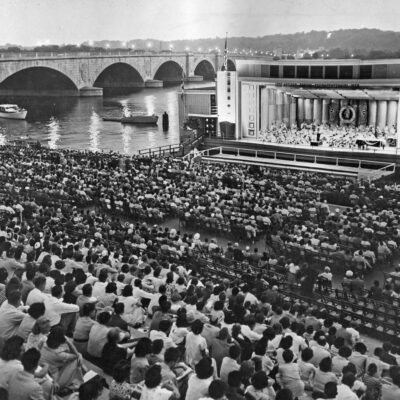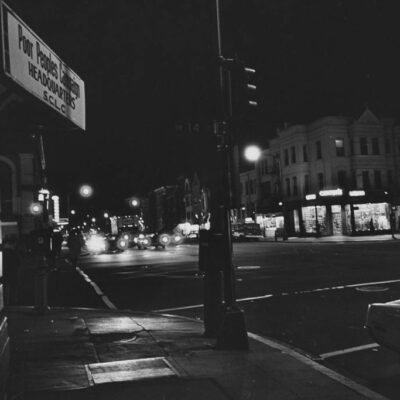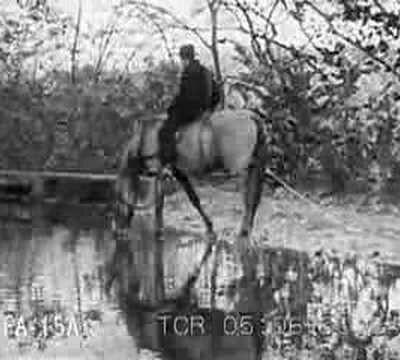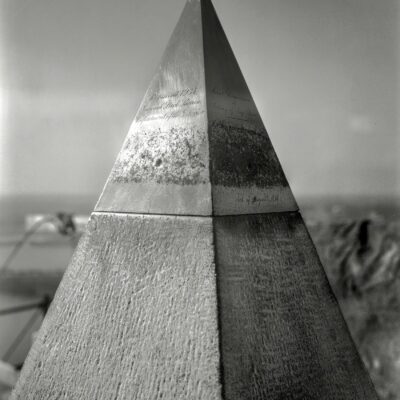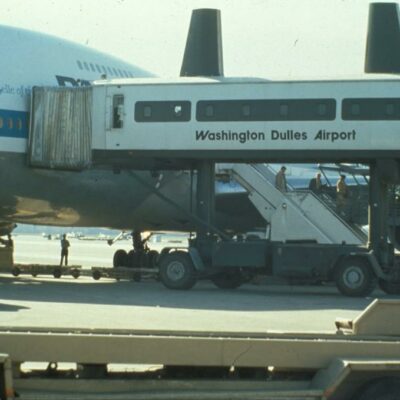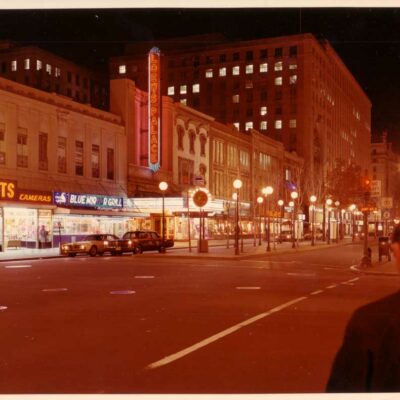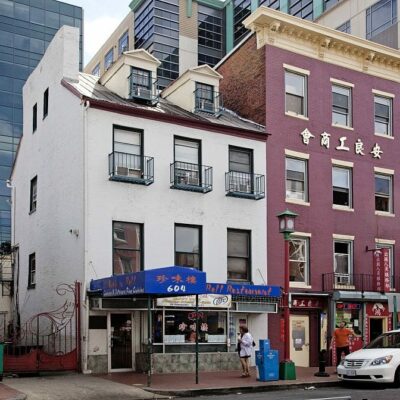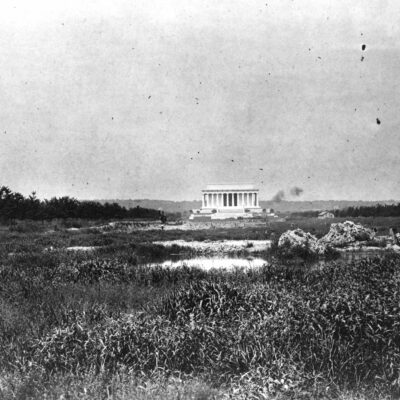This is a cross post by Douglas Barclay, originally posted here.
One of the major joys of going to school in Washington DC is the cities unrelenting exposure to history, both large and small. I am sure that most students at Catholic know that the old Fords Theatre, located only seconds from Forever 21 and H&M in Chinatown was the site of the assassination of Abraham Lincoln by John Wilkes Booth in 1865. Maybe you even knew that nearby Wok and Roll Sushi, an unassuming average sushi restaurant was once a boarding house that served as a meeting place for Booth and his co-conspirators, its proprietor Mary Surratt would eventually become the first woman ever executed in the United States for her role in the assassination.
When I moved into my apartment complex off New York Ave this August, I was unaware of the rich history of the surrounding neighborhood, much less the old dilapidated parking garage only half a block away. You have probably seen it on any Metro ride downtown; it is an old red brick building, with a curved roof, lots of graffiti and a rather gaudy sign of the Italian restaurant chain, Carmines emblazoned along the side. For months I was completely oblivious that this run down shell of a building was once home to one of music’s greatest moments, amongst many other notable events.
Originally named the Uline Ice Arena, the building opened in 1941 as the home to the Washington Lions hockey team. For two seasons the Washington Lions played their home games at the Uline. The original concept of the arena was to serve as a performing ground for traveling circuses and ice capades, Ringling Brothers and Barnum Bailey circus performed several shows there beginning in the mind 1940s. Like many other businesses, the Uline did its part to help the war effort, offering hot meals and a warm cot for soldiers passing through Washington on leave for fifty cents a night.
Throughout its early years, the business practices of owner Miguel L. Uline, caused great stir amongst patrons in the city. The Uline Arena was opened originally as a white’s only arena, though African Americans were permitted to attend segregated boxing matches. By the late 1940s the arena had become home to the Washington Capitals NBA team, an early precursor to the Washington Wizards. This period of time at the Uline is notable as the beginning of the career of Red Auerbach, a legend amongst NBA Basketball coaches who would go on to coach the Boston Celtics for almost two decades. In 1953, the arena once again played home to the political spectrum by playing host to the inaugural ball of President elect Dwight D. Eisenhower.

After toiling as a home for National Guard functions and another year long stint as a hockey arena, the Uline was sold in 1959 following the death of Miguel Uline. The new owner, jewelry entrepreneur Harry J. Lynn purchased the arena for close to one million dollars and quickly renamed it the Washington Coliseum. As social and political tensions raged in Washington and around the world, the Coliseum played venue for two major speeches by Malcolm X and Nation of Islam leader Elijah Muhammad. When Muhammad spoke in 1959, over 10,000 people packed the otherwise 9,000 seat venue. It is considered to be one of Muhammad’s major speeches of the time period.
By 1964, popular culture had transformed the arena into a popular concert hall and the Coliseum played host to one of music’s most historic nights. Two nights after making their American television debut on the Ed Sullivan Show, the Beatles played their first concert on American soil at the Washington Coliseum on February 11th 1964. They opened with a cover of Chuck Berry’s “Roll Over Beethoven” and for eleven more songs competed with the raucous screams of teenage girls to hear their instruments and deliver their songs with a passion that only the Beatles could channel into live energy. With their instruments equipped on a primitively assembled boxing ring, the concert is curious to watch in 2011 as you see the band have to rearrange their instruments and location of Ringo Starr’s drums in order to find any combination of sounds that would overpower the screams of their fans. This concert would be many fans first exposure to the Beatles as it was filmed by CBS and released in theatres only one month later.
In the following years the Coliseum would serve as the DC stop on tours by such legends as the Rolling Stones, the Mamas and the Papas and Bob Dylan. Dylan used a photograph of his 1965 show as the cover for his Grammy award winning “Bob Dylan’s Greatest Hits” record. This photo and album is considered to be an essential piece of any vinyl collection. Following a riot at a Temptations concert in 1967, in which over twenty people were arrested, six injured and thousands of dollars of damage caused to the surrounding neighborhood, it would be eighteen years until the venue would see another major concert. Before AC/DC played there in 1985, the venue was the location of various ventures including a go/go club. In the late 80s, a 17 million dollar renovation allowed the arena to play host to a variety of church services throughout the early 90s. Throughout the remainder of the decade the once famed arena was a transfer stop for the city’s waste management. Though efforts have been made to purchase the facility and return it to its former glory, the lease is currently handled by a firm that has turned it into a parking garage. For 100.00 a month you can park your car on the same spot where legends once walked. In 2008 the building was added to the list of National Historic Sites.
Whether the Coliseum ever sees the former glory it once held with a firm grasp remains to be seen, since 2008, the GTM Architect firm have been planning and revising its goal to bring life back to the shell of the old Coliseum. Next time you are headed downtown, to see a movie, grab a coffee or spend another miserable night at Brothers, take a moment and glance down at the old brick building, and know that it was not too long ago where giants of history walked, laughed and sang within the confines of the old building on 3rd St.
